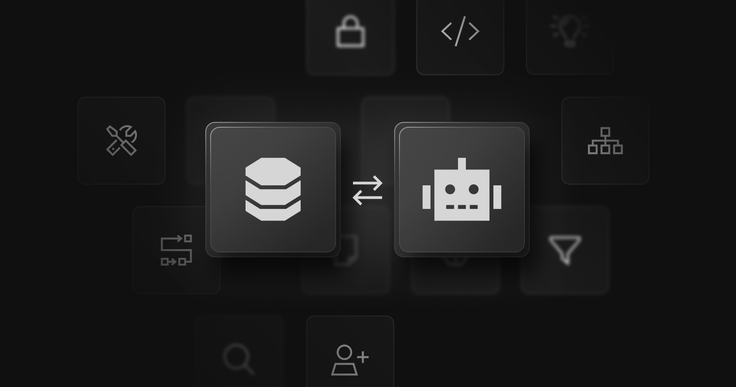Let’s level set on something: AI models aren’t the hard part anymore.
Big, shiny Large Language Models (LLMs) get all the credit. But here’s the truth most organizations still have yet to land on: they’re only as smart as the data you feed them. And in enterprise AI, that bar is much higher than day-to-day consumer uses.

If your app can’t instantly access the right context, your expensive AI turns into a liability. Hallucinations, bad decisions, outdated responses? All symptoms of the same disease: infrastructure that hasn’t matured past pre-AI era requirements.
The future of real-time enterprise AI doesn’t belong solely to bigger models — it belongs to smarter infrastructure. And that starts with the most important protagonist: your database.
The power of judgment
Agentic AI is everywhere, and the real value in it isn’t just generating outputs, but choosing the right information to generate with. In this new stack, your database does more than simply store data — it actively:
Filters what matters now
Assembles dynamic context
Ranks results by relevance
Routes results to AI models in real time
That’s more than infrastructure — it’s judgment. And judgment is exactly what real-time AI demands.
The real-time AI problem no one talks about
Models don’t understand your business. They don’t know what’s changed since the last customer call, which data is fresh (or outdated) or what matters to a CFO versus a support rep.
That job falls to your infrastructure — but most enterprise stacks still look like:
A vector database
A SQL database
A document/JSON store
An orchestration layer
This patchwork system might initially work well, but it won’t scale. Not for customer-facing copilots, internal agents and definitely not for real-time enterprise AI.
What an AI-native database actually looks like
To build AI apps that work at enterprise speed and scale, your database needs to connect to and deliver meaningful results to agents. That means:
Hybrid retrieval.
Structured, unstructured and vector — all in one place. Because your AI doesn’t care where the answer lives, it needs it now.Real-time ingestion querying.
Support streaming data and sub-second queries. Yesterday’s snapshot won’t cut it for today’s prompt.Built-in vector search.
Semantic search built into the engine, not bolted on. Less plumbing, more results.Context-aware ranking + routing.
Curated results tailored to the model and moment — because not all relevant data is created equal.Unified architecture.
One engine. No glue code or Frankenstein stack. The less you stitch, the more you scale.
RAG is critical to your infrastructure
Retrieval-Augmented Generation (RAG) is more than a feature — it’s a foundational architecture. And it only works if your infrastructure can deliver the right context fast, consistently and accurately.
That means your database is at the heart of your AI application experience. Not in the background; in the decision loop. If your retrieval is slow, noisy or incomplete, your AI will be too.
Where SingleStore fits in to your AI architecture
At SingleStore, we’ve spent years building the kind of AI-native infrastructure organizations realize they need to achieve enterprise AI performance. We didn’t wait for the AI hype to start bolting on vector search — we built for:
Real-time ingestion and queries
One engine for transactions, analytics and vectors
Low-latency hybrid retrieval (SQL + semantic)
Built-in support for RAG and AI agents
Production-grade scale and concurrency
That’s not an afterthought. That is the foundation.
Your database: The center of gravity for your AI stack
In traditional applications, the database was seen as a utility. In AI-native apps, it’s the decision engine — the critical piece standing between your model and a mess.
Want faster copilots, fewer hallucinations and real business impact from AI? Then start by rethinking your infrastructure — because the smartest apps are built on systems that choose data, not just store it.SingleStore is the database for real-time enterprise AI.
Frequently Asked Questions












